Hi,
After visiting Tabo monastery, as I told you in my previous part of this story, the excitement had almost doubled, because we had reached just at the start of the pure deserts of Spiti. None of us were on this land before, yet we had heard a titbit about these wonderful places that we would visit.
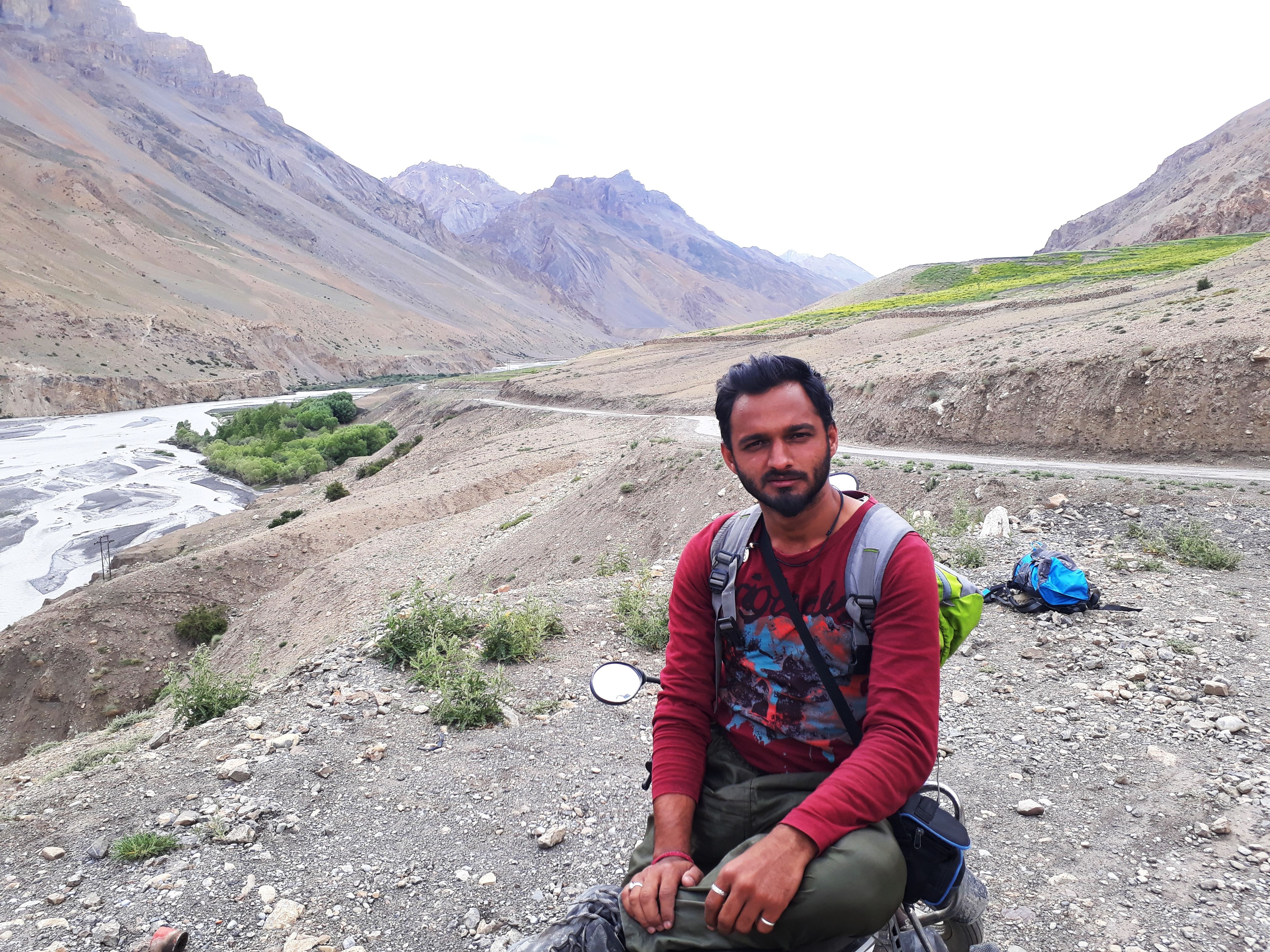 (For details of the pic, please read till the end)
(For details of the pic, please read till the end)Some interesting facts about Spiti
Before proceeding further with my story let me tell you some interesting facts about this district of Himachal. The word Spiti means The Middle Land, because it is the middle land between the Tibetan plateau and lower Himalaya in India. And being the driest region of Himachal Pradesh, but with a plenty full of snow fall in the winters, the place has the lowest population density in Himachal Pradesh.
It holds the 2nd rank in India after Dibang valley of Arunachal Pradesh at 1st place. It is also known as the land of Lamas, because there are a number of monasteries at almost every far scattered places you visit, and you will find the lamas there. Given to the dangers associated with the falling stones and dusty roads, you will read this in warning boards "Don't be a Gama in the Land of Lamas."
Naren wanted to see the structure of the age old monastery built upon an eroded hill. Rahul was less concerned about anything, so far he had acted in a narcissist way. But it was fun and safe to be together.
Dhankhar Monastery
Reaching Dhankar can be another job if you don't have your own vehicle. Remember to take a right turn just after about 20 kilometers from Tabo towards Kaza, a 6-8 kilometers single laned metalled road diverses to take you to the Dhankhar monastery. If one wants to trek, it would be a 2-3 kilometers steep hike from the NH-5 to Dhankar monastery.
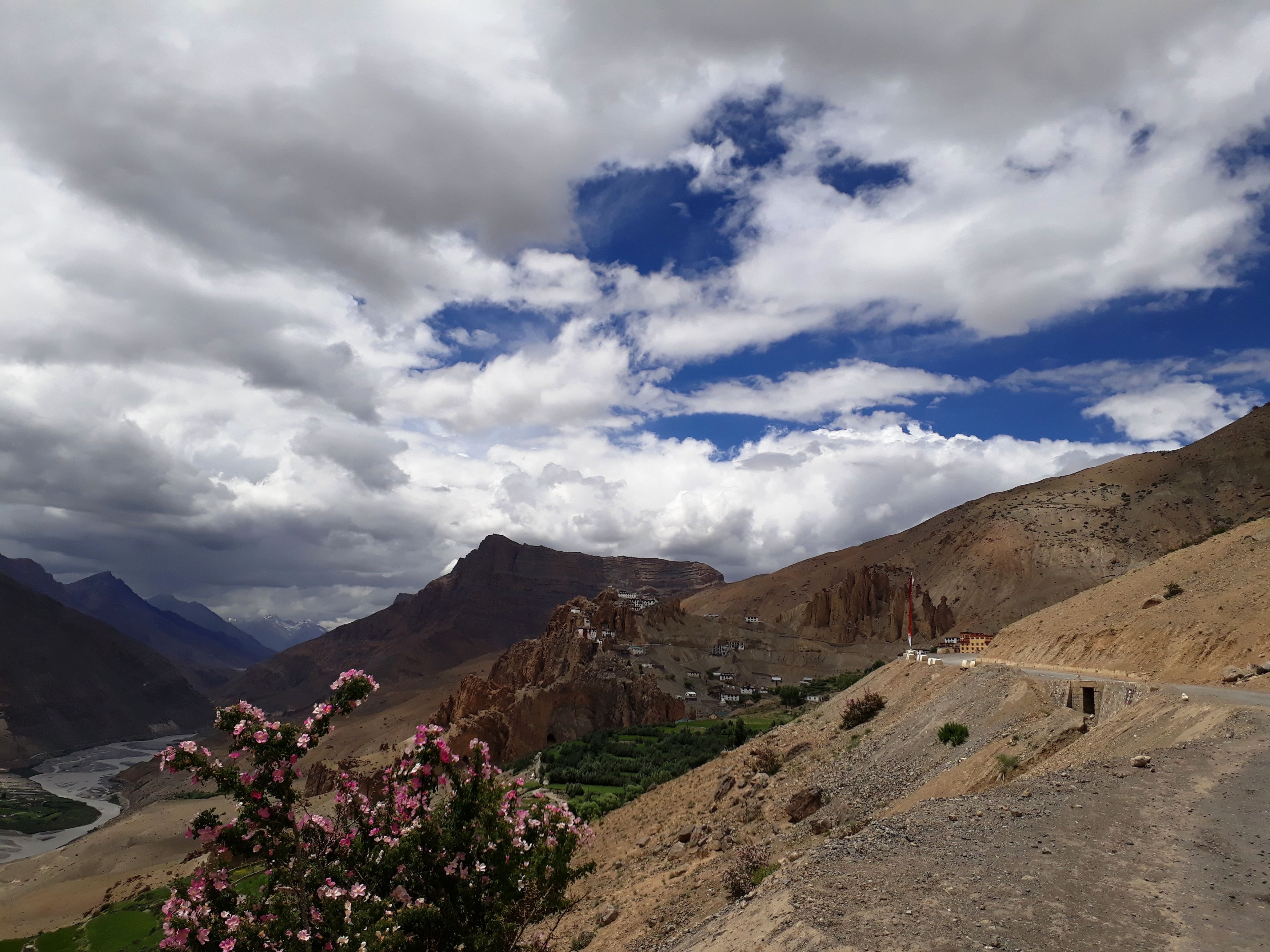
There are no shrubs or trees after the road rises above the river elevation, yet a beautiful flowered plant manages to bloom here and welcomes you to the breathtaking spectacle of the cluster of the the monasteries and homes.
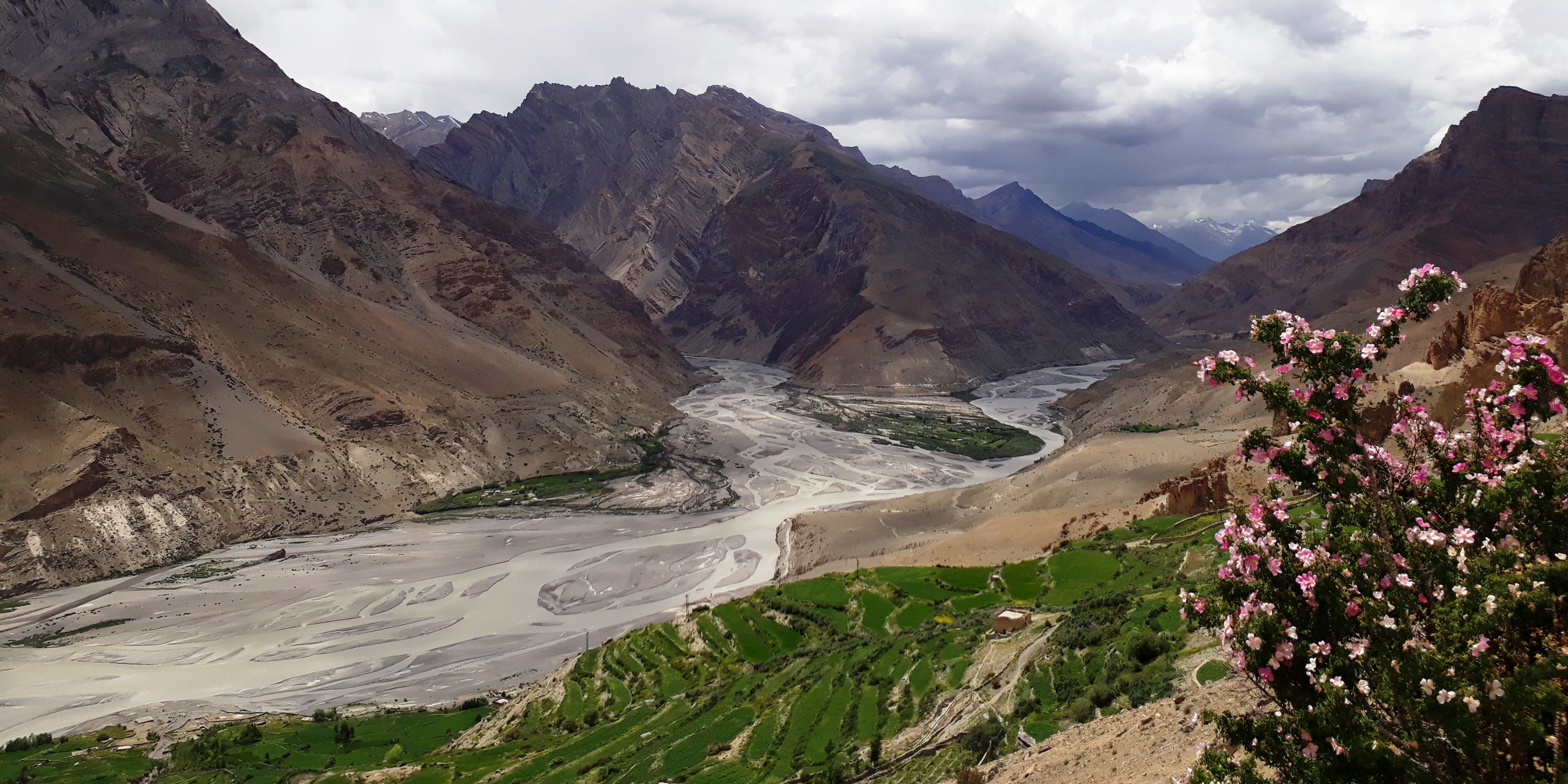
I was so fascinated, that I had to stop my bike and click few pictures. In the above picture, you also see the merging of the Pin river with the straight flowing Spiti river. Pin river originates from the Pin valley national park, on the other side of which lies Khir Ganga and Manikaran.
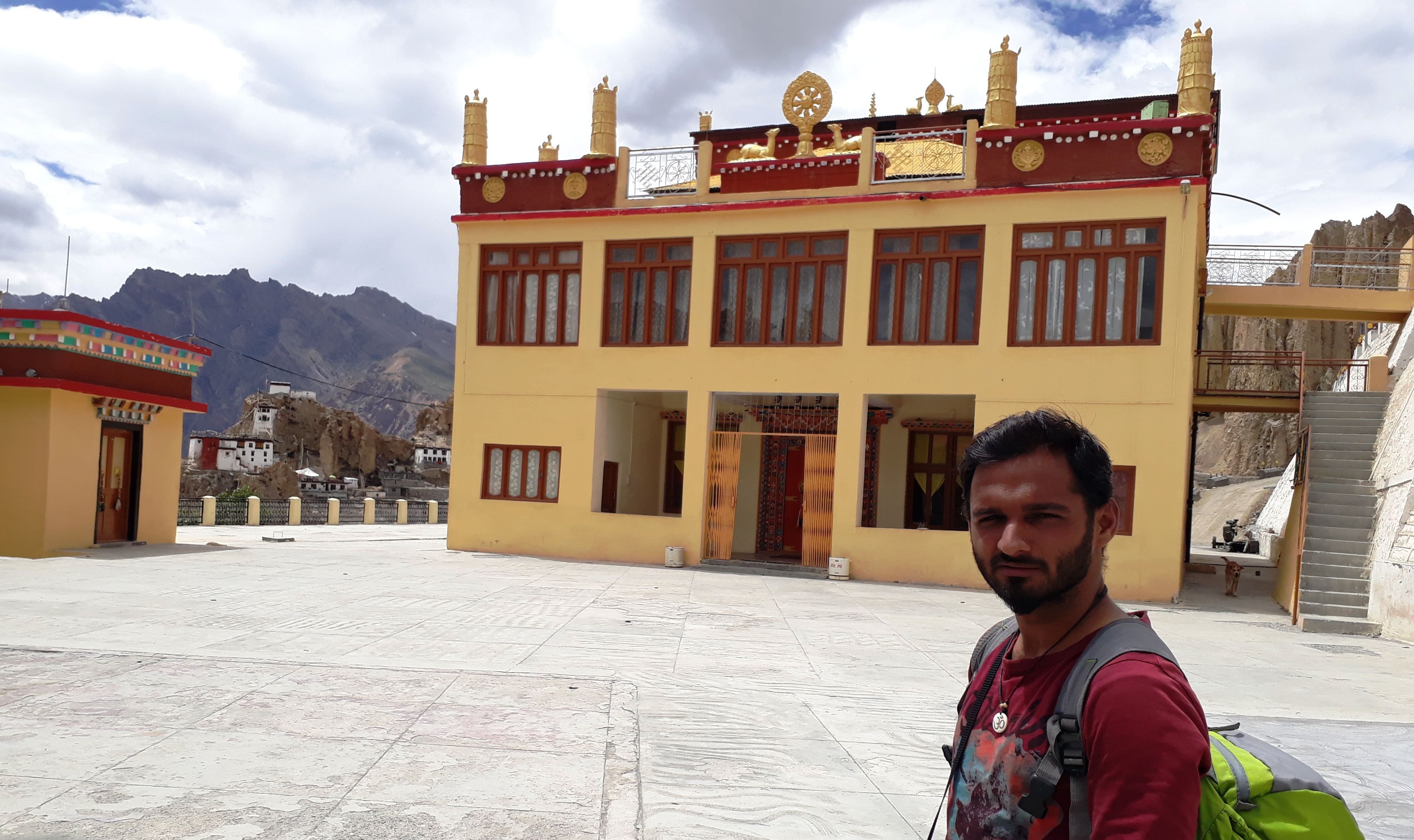
(newly built monastery and the famous Dhankhar monastery visible through the gap in between)
We took a look at the newly built monastery which comes first on our way and the metalled roads ends there. A further half kilometer of dusty road took us to the famous Dhankhar monastery.
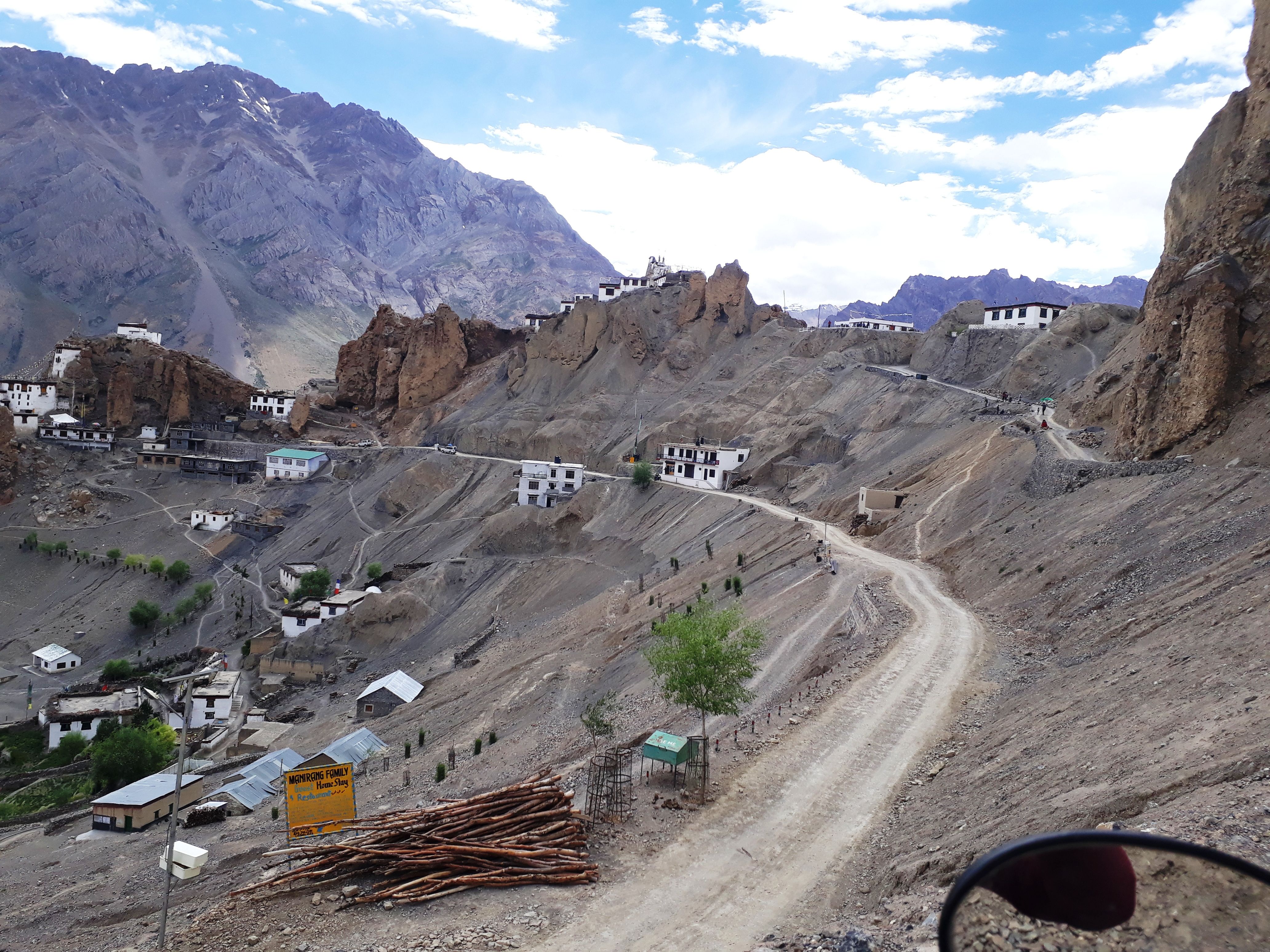

As we entered from below, some RCC work was under way on the sides of the path. At the entrance was a kind of cafeteria, where some foreigners had taken the seats for tea. One can read a small history of the monastery written on this black board.
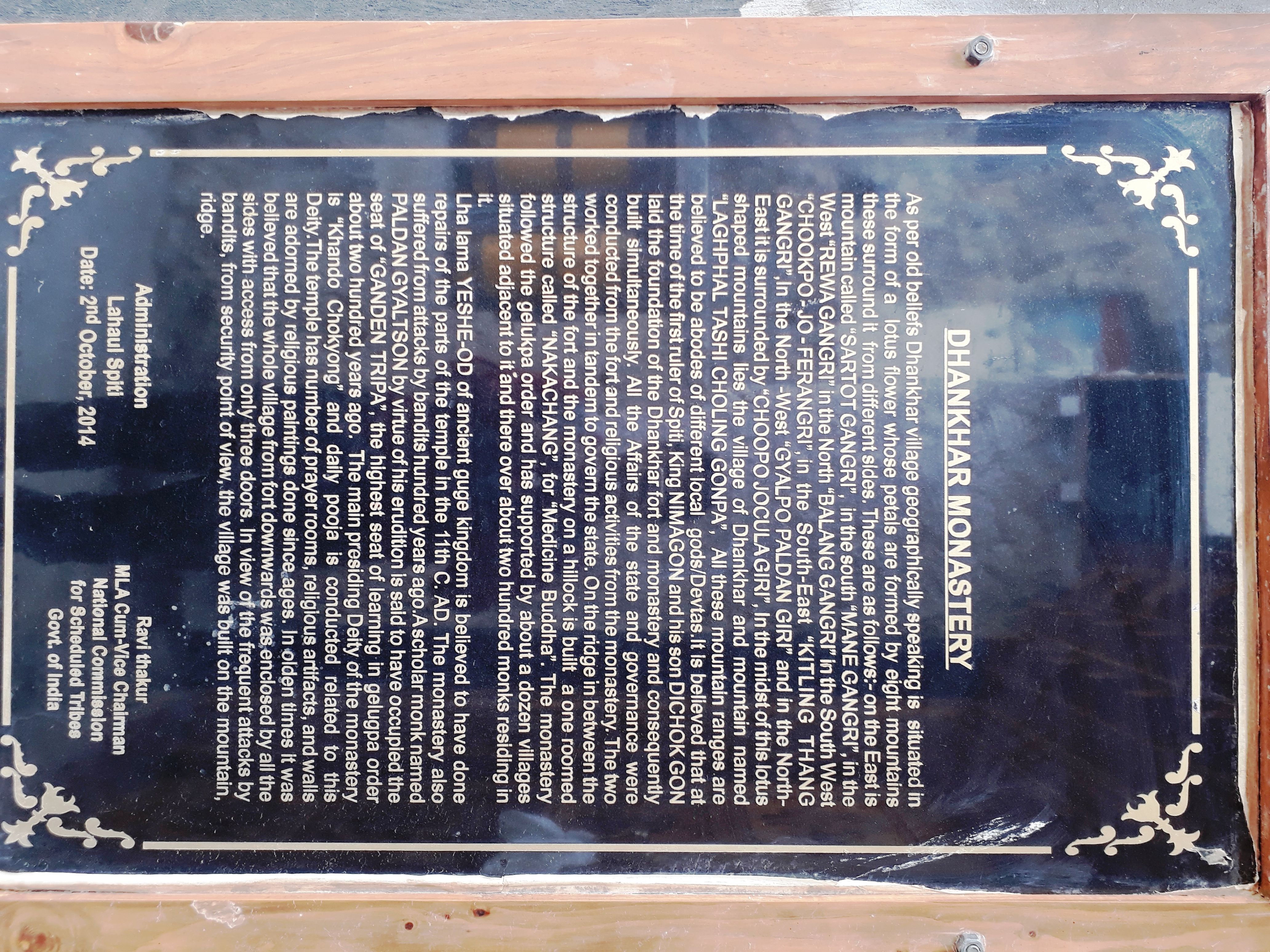
(somehow the image is coming horizontal, originally it is saved vertical with me, don't know how to fix it, sorry!)
The monastery as a whole is perched on this stronger remains of the hill, but it looks as if the hill would crumble down some day. I don't know how much safe it is.
As is written in the history board, the repairs were made to the monastery in the 11th AD, but the date of its first built is not given. But the information is sufficient to suggest that this mud wood and stone built monastery has sustained itself for more than a millennium.
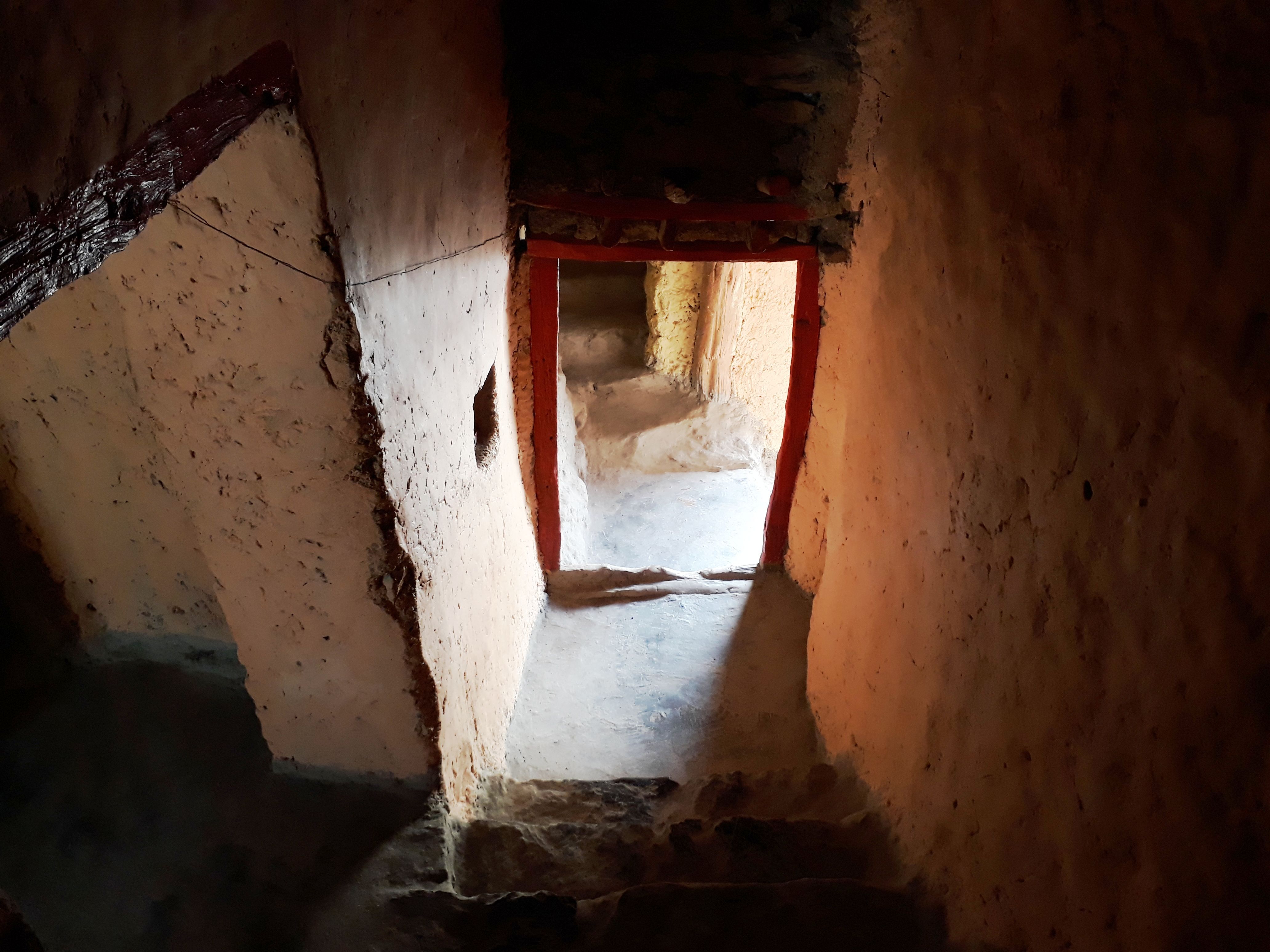 (entry to the monastery chambers/rooms)
(entry to the monastery chambers/rooms)
One has to take out the shoes and wear the slippers provided at the gate. The rooms are very short in heights, and even a 5'5" person like me has to bend to half to enter them. A closed chamber had this notice plate.
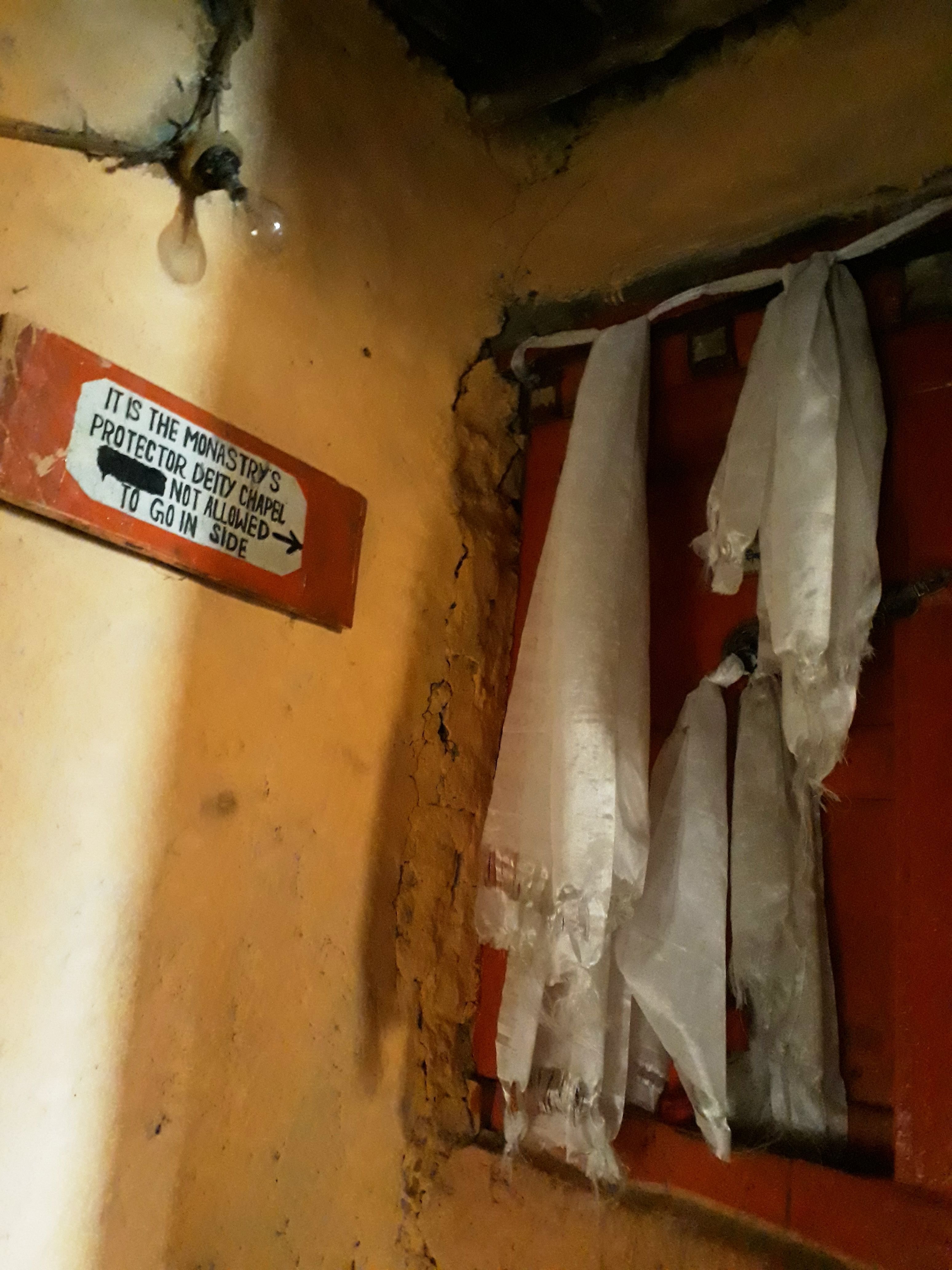
 (entry to the monastery chambers/rooms)
(entry to the monastery chambers/rooms)One has to take out the shoes and wear the slippers provided at the gate. The rooms are very short in heights, and even a 5'5" person like me has to bend to half to enter them. A closed chamber had this notice plate.

All other chambers were having these flames(perhaps eternal) which you can find at almost any monastery.
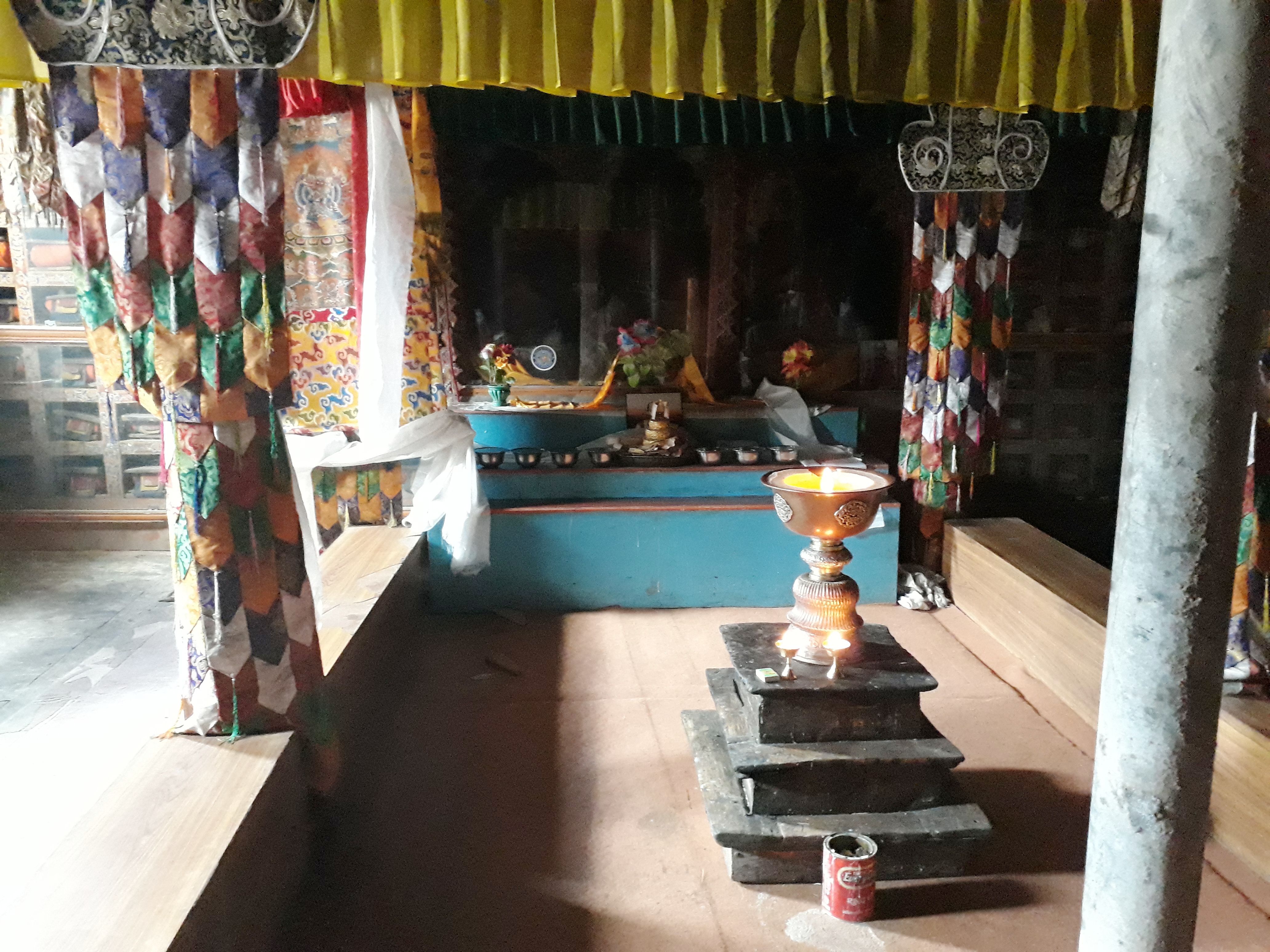
At the top floor of the building, photography was not allowed. A Lama was seated on the chair and recited something from a book he held in his hands. He asked about our places and said that Himachali people don't have to pay for a visiting ticket, others have to pay somewhere less than a dollar. Thankfully I saw a RCC beam retrofitted at the side of the top slab, and that made me feel a little more safer with the building.
There were these four chambers in this top floor dedicated to different purposes.
We descent back and then I tried to capture the beauty of surroundings from this perfect vantage point. Have a look at the Dhankhar village as a whole in the picture below.
We descent back and then I tried to capture the beauty of surroundings from this perfect vantage point. Have a look at the Dhankhar village as a whole in the picture below.

(dhankhar village)
Leaving for Kaza
This dusty road via Dhankhar makes a short stretch of an alternative to NH-5, and merges back with NH-5 at its two far ends distanced about 15 kilometers(including the initial 8 km metalled road on the other side.) We started on this dusty road
towards Kaza, which would merge with the tarmacked double laned NH-5 after a stretch of about 6-8 kilometers. A road goes towards Lallung, and if you don't intend to go there, take a left.
towards Kaza, which would merge with the tarmacked double laned NH-5 after a stretch of about 6-8 kilometers. A road goes towards Lallung, and if you don't intend to go there, take a left.
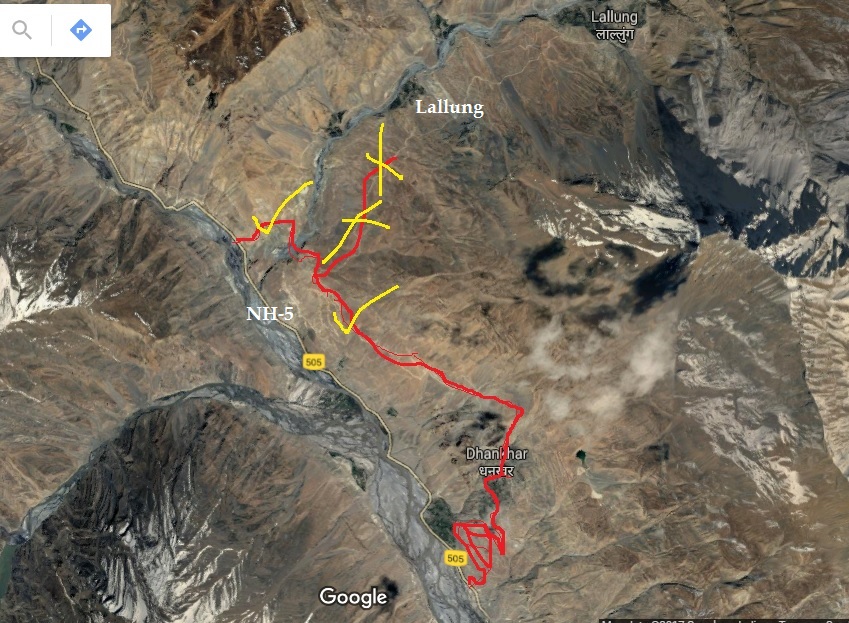
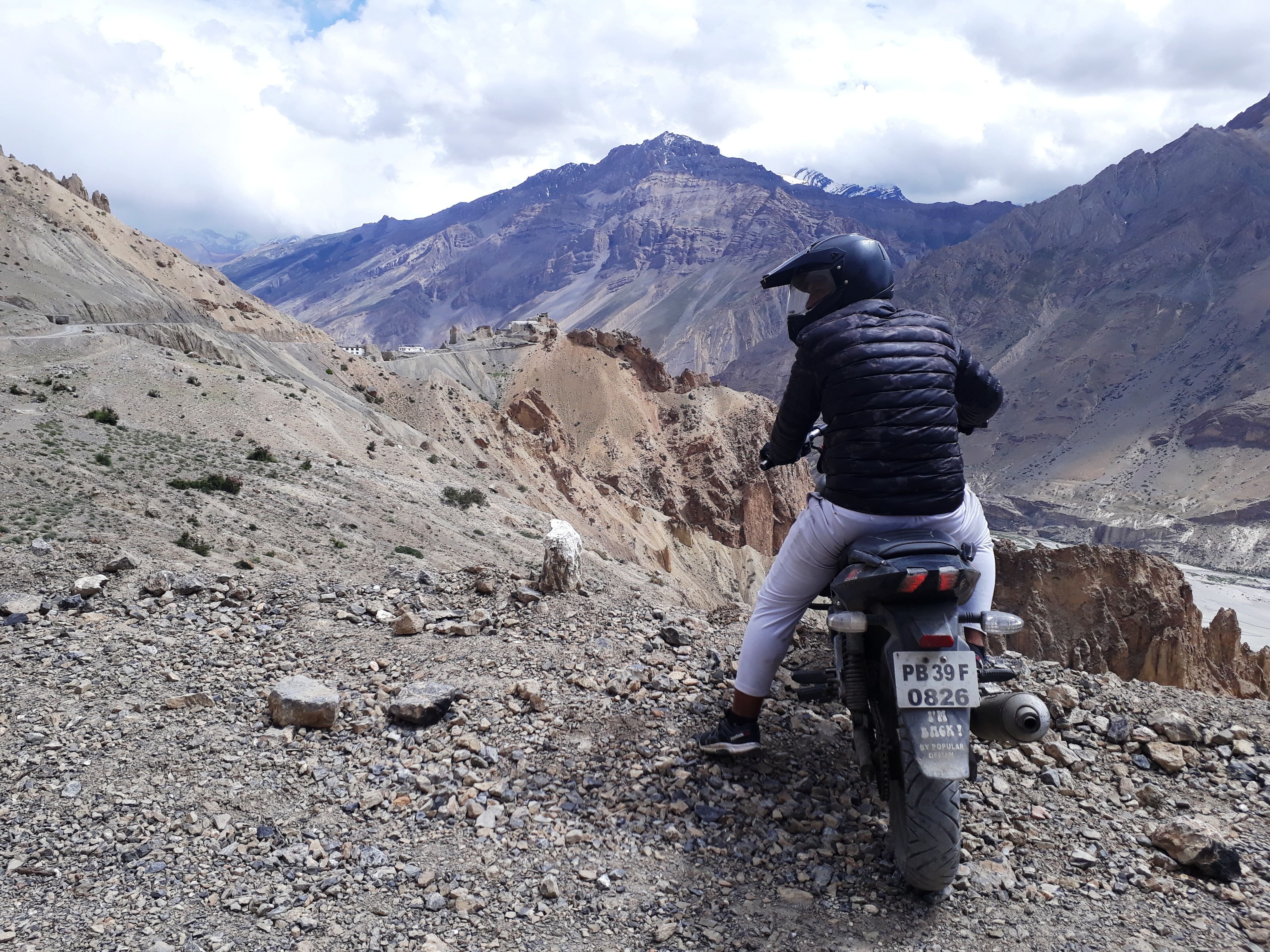
(Rahul giving a biker's pose)
As we were new to the road, I stopped for the information when I spotted the only group of ladies working on the road. They were happy to see me and were from Lallung. They asked me if I visited Lallung, and told me that it is beautiful. I said maybe some other day, and thanked them for the confirmation of the route to Kaza. It is said that the ladies in the area work the most, both at homes and outside, and these women worked as labors in PWD, thus served an example.
When this dusty road merged with the NH-5, we spotted a small meadow just above the road, but with not more than just a tinge of green. We stopped for taking rest, and clicked some picture. The 1st picture at the top shows the same place.
We ate some dry fruits and drank water and just sat there for about 15 minutes. Our next destination was Kaza, which has a distance of about 30 kilometers from Dhankhar monastery. Let's keep that part of story for some next post.
We ate some dry fruits and drank water and just sat there for about 15 minutes. Our next destination was Kaza, which has a distance of about 30 kilometers from Dhankhar monastery. Let's keep that part of story for some next post.
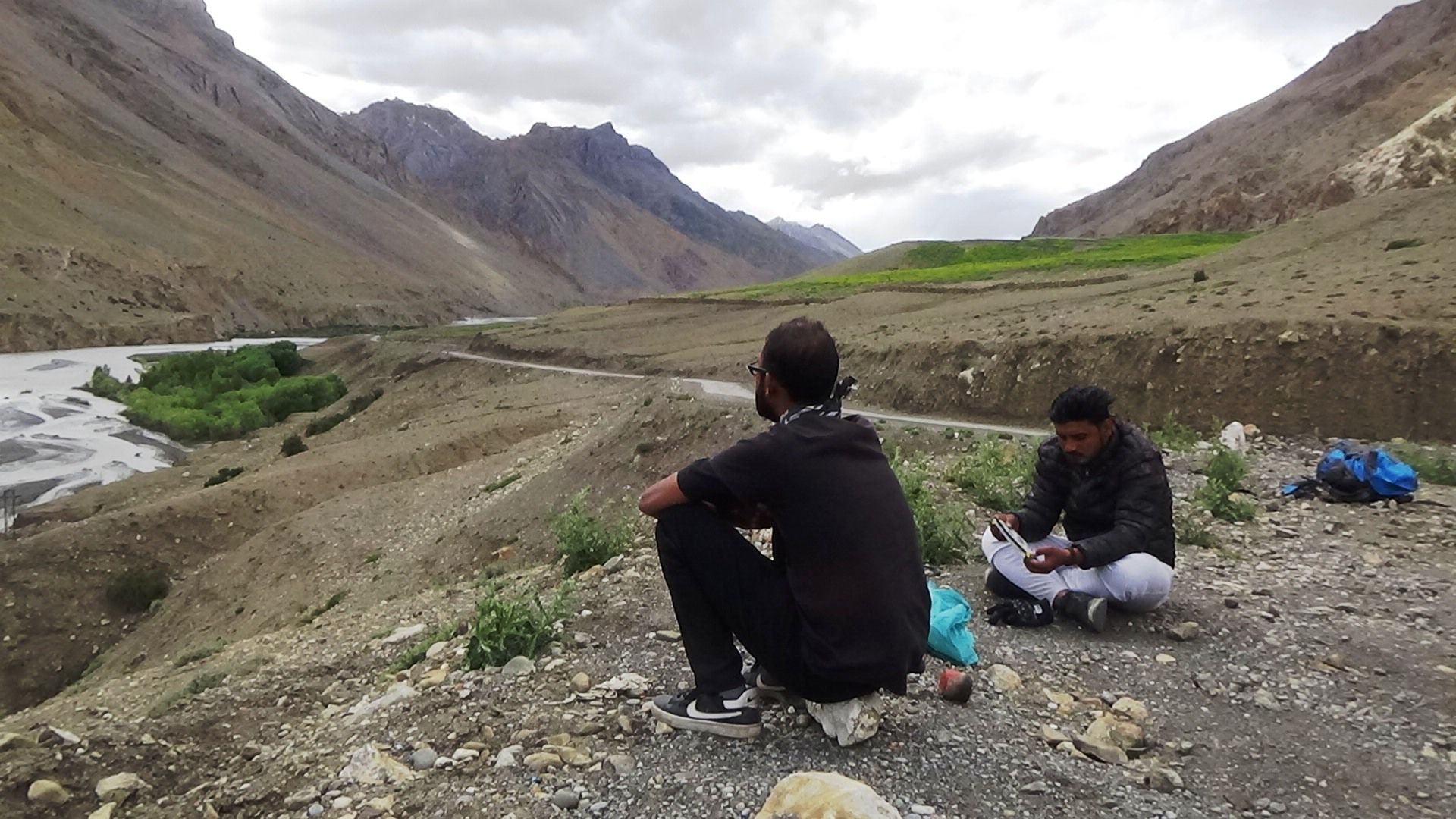
(Naren and Rahul busy with their thoughts)
Thanks for the kind visit!
No comments:
Post a Comment